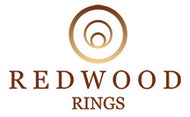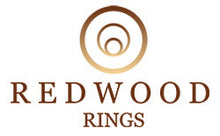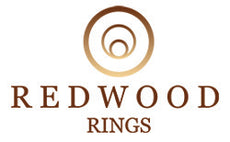Are Tungsten Rings Heavy?

When it comes to metal rings, especially those used for wedding bands and jewelry, their weight can be a significant factor in both comfort and preference. The heaviness of a ring is primarily influenced by two key factors: the density of the metal and the design of the ring itself.
Understanding the Heaviness in Metal Rings
The density of a metal is a major determinant of its weight. Density, measured in grams per cubic centimetre (g/cm³), is essentially how much mass a material has in a given volume. Heavier metals have higher densities, meaning more mass is packed into the same space. For instance, tungsten, with a density of 19.30 g/cm³ , is one of the densest and, therefore, heaviest metals used in jewelry. This contrasts with metals like titanium, known for its strength but low density (4.506 g/cm³), resulting in much lighter rings.
The design elements of a ring, such as its thickness, width, and even the addition of gemstones, can significantly influence its overall weight. A thicker and wider tungsten band will feel substantially heavier than a thinner and narrower one. Similarly, the addition of large or multiple gemstones can increase the weight of the ring.

Tungsten Weight
Are tungsten rings heavy? They are known for their weight, typically heavier than traditional metals used in jewelry like gold or silver, but they are not excessively heavy. As a material, tungsten is denser and, therefore, has a greater heft than many other metals. However, many wearers often consider this weight a positive attribute, as it provides a feeling of sturdiness and quality.
Compared to titanium, another popular contemporary ring material, tungsten is noticeably heavier. Depending on personal preference, this can be both a pro and a con. Some people appreciate the substantial feel of tungsten as it can give a sense of durability and presence. Others might find it less comfortable, especially if they are not accustomed to wearing heavier jewelry.
Did you know?
The name comes from the Swedish word 'tung sten', which means heavy stone.
In terms of actual weight, a typical tungsten ring might weigh between 15 and 20 grams, depending on the size and design of the ring. This is heavier than gold, which might weigh around 5 to 7 grams for a similar ring. However, it's important to note that weight perception is subjective and can vary greatly from one person to another.
The weight of tungsten rings does not impact their wearability for most people. Many find the added weight a feature that sets tungsten rings apart from more traditional jewelry metals. Trying on a tungsten ring is always recommended to understand how its weight feels on your hand.

How Are Tungsten Rings Made?
Tungsten rings are crafted using a detailed and technical method that underscores both the material's robustness and its distinctive style. The initial phase of production involves the synthesis of tungsten carbide, an exceptionally hard compound created by fusing tungsten and carbon atoms together. This is accomplished through a process known as powder metallurgy, which entails thoroughly blending powdered tungsten and carbon before pressing the mixture into the ring's intended shape under significant pressure.
Following this, the shaped mixture undergoes a process called sintering, which takes place in a high-temperature furnace. The sintering process is critical for the integrity of the ring, heating the compacted powder to temperatures just below its melting point. This step facilitates the fusion of individual particles into a cohesive, solid form, resulting in a ring blank that possesses remarkable hardness and durability, albeit with a rough surface initially.
To transform these rough blanks into the sleek, polished tungsten rings admired for their aesthetic appeal, a series of meticulous polishing stages are employed. The extreme hardness of tungsten carbide necessitates the use of diamond abrasives for polishing, the only material hard enough to effectively smooth and refine the surface of the ring. This polishing process is comprehensive, involving multiple steps to incrementally achieve the desired smoothness and reflective shine characteristic of high-quality tungsten rings.
In addition to polishing, other finishing touches may be applied to enhance the ring's appearance or functionality. For instance, some tungsten rings are coated with a thin layer of other materials, such as black carbon or gold plating, to offer a variety of colour options and finishes. Laser engraving is also a popular option for personalization, allowing for the inclusion of custom designs, text, or symbols that are precisely etched onto the ring's surface.
Are Tungsten Rings Heavy?
While some may find the weight of tungsten rings a symbol of their robustness and enduring quality, others might prefer lighter alternatives for daily comfort. It's a matter of personal preference, reflecting one's lifestyle and comfort with different types of jewelry.
Ultimately, tungsten rings are not just about the weight they carry; they are about the statements they make. Whether it's the representation of a strong, unbreakable bond in a marriage or a personal choice for fashion-forward jewelry, tungsten rings have carved out their niche. They remind us that sometimes, the weight of a ring can mean so much more than just its physical presence. It can symbolize the weight of commitment, the gravity of style, and the importance of making choices that resonate with our personal narratives.






